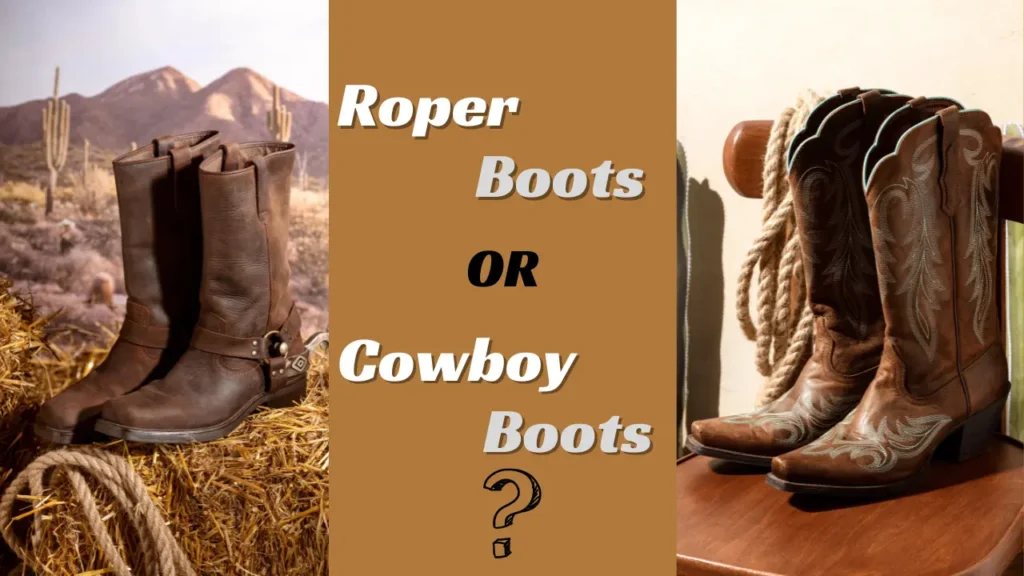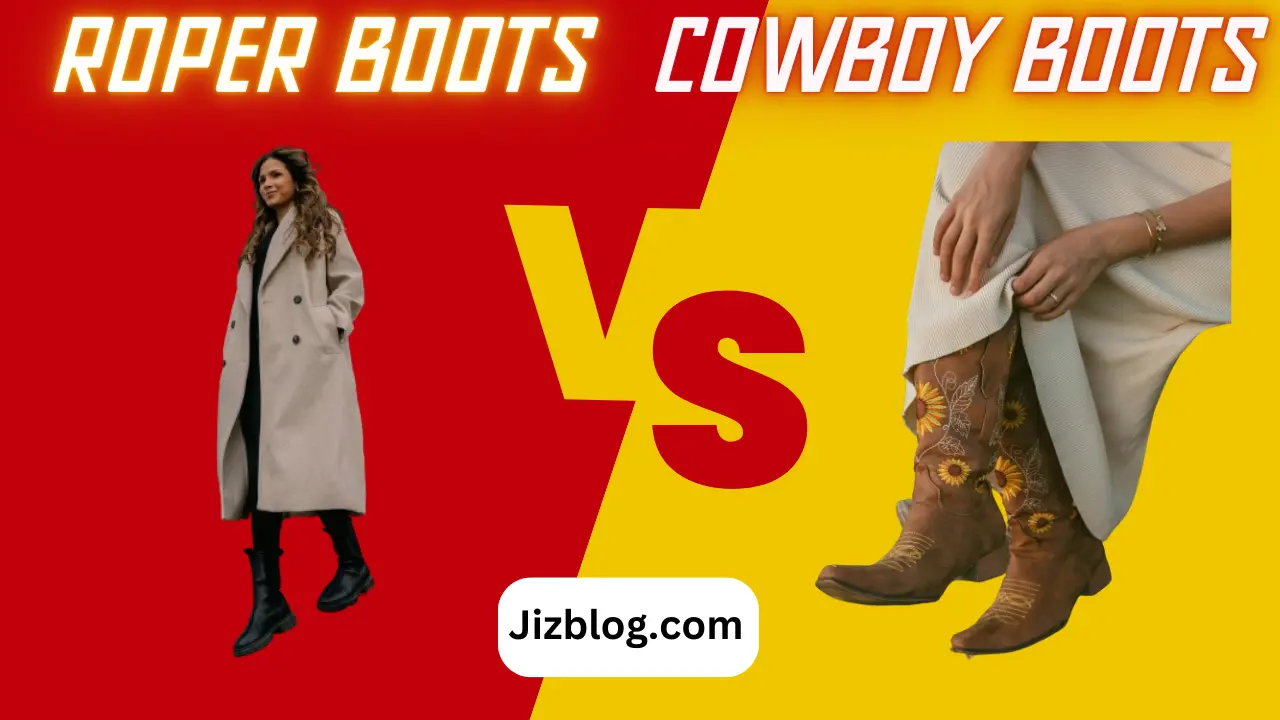When it comes to Western footwear, two styles stand out prominently: roper boots v/s cowboy boots. Both are iconic in their own right, deeply rooted in Western culture and fashion. Western boots are a symbol of rugged individualism and a staple of American fashion. Among the myriad styles available, two stand out: roper boots and cowboy boots. Both are steeped in tradition and have distinct characteristics that make them unique. However, there are distinct differences between the two styles, from their origins to their design and functionality. In this article, we’ll delve into the world of roper boots v/s cowboy boots, comparing and contrasting their features to help you choose the perfect pair for your Western-inspired look.
Introduction
Western boots are more than just footwear—they’re a symbol of American heritage and style. Among the most iconic Western boot styles are roper boots and cowboy boots. While both evoke images of the American West, each has its own unique characteristics and history. In this article, we’ll delve into the world of roper boots v/s cowboy boots, exploring their origins, design features, and practicality to help you decide which style best suits your Western-inspired look.
Origins and History
Roper Boots
The history of roper boots is relatively recent compared to cowboy boots. They were first introduced in the 1950s by bootmaker Herb Jones, who aimed to create a boot suitable for rodeo roping. Roper boots were designed with a lower shaft height to allow for greater ankle flexibility, making them ideal for activities that require agility, such as roping and riding. Over time, roper boots became popular not only for their functionality but also for their comfort and versatility.
Cowboy Boots
Cowboy boots have a much longer history, dating back to the 19th century when they were worn by cattle ranchers and cowboys in the American West. The design of cowboy boots is influenced by the needs of horse riders, providing comfort, protection, and stability while riding and working on horseback. Cowboy boots are characterized by their tall shafts, angled heels, and distinctive decorative elements, such as stitching, inlays, and overlays, which vary in style and complexity.
Design and Construction
Roper Boots
Roper boots are known for their practical design and comfortable fit. They typically feature a lower shaft height, ranging from 8 to 10 inches, and a rounded toe. The heel is lower and wider compared to cowboy boots, providing stability and support for everyday activities. Roper boots are often made from durable leather and feature minimal embellishments, reflecting their utilitarian nature.
Cowboy Boots
Cowboy boots are easily recognizable by their tall, angled shafts, which range from 11 to 14 inches in height. They often feature a pointed or squared toe and a higher, slanted heel, which is designed to prevent the foot from slipping through the stirrup while riding. Cowboy boots are known for their intricate designs, which can include decorative stitching, inlays, and overlays, as well as exotic leather materials, such as ostrich or snakeskin.

Functionality and Versatility
Roper Boots
Roper boots are prized for their comfort and versatility. Their lower shaft height and wider heel make them well-suited for everyday wear, providing ample support and stability. Roper boots are often preferred for activities that require a greater range of motion, such as walking, dancing, or working outdoors. They are also a popular choice for casual wear, offering a relaxed and timeless look that pairs well with jeans or khakis.
Cowboy Boots
Cowboy boots are renowned for their durability and functionality. Their tall shafts and angled heels are designed to provide superior support and protection. Hence making them ideal for riding and working on horseback. Cowboy boots are also a fashion statement, with their intricate designs and distinctive silhouette adding a touch of Western flair to any outfit. While they may not offer the same level of comfort as roper boots for extended periods of walking or standing, cowboy boots are unmatched in their performance and style.
Conclusion
In conclusion, both roper boots and cowboy boots have their own unique characteristics and appeal. Roper boots are valued for their comfort and versatility, making them a practical choice for everyday wear. Cowboy boots, on the other hand, are prized for their durability and functionality, making them ideal for riding and working. Whether you prefer the classic simplicity of roper boots or the rugged elegance of cowboy boots. Both styles are sure to make a statement and add a touch of Western charm to your wardrobe. Whether one favors the straightforward elegance of roper boots or the sturdy sophistication of cowboy boots, both varieties are guaranteed to leave an impression and infuse a dash of Western allure into one’s attire.
FAQs
Q: What are the main differences between roper boots and cowboy boots?
A: Roper boots have a lower shaft height and wider heel. On the other hand cowboy boots have taller shafts and higher, slanted heels. Cowboy boots often feature decorative stitching and embellishments, whereas roper boots have a more minimalist design.
Q: Are roper boots more comfortable than cowboy boots?
A: Roper boots are often considered more comfortable for everyday wear. It’s because they have lower heels and wider shafts, offering better ankle flexibility.
Q: Can roper boots be worn for riding horses?
A: Yes, roper boots can be worn for riding horses. They offer good ankle support and flexibility, suitable for various equestrian activities.
Q: Are cowboy boots only for fashion, or are they practical for everyday use?
A: Cowboy boots are stylish and practical for daily wear. They offer great support, protection, and traction, ideal for horse riders and outdoor workers.
Q: Can cowboy boots be resoled?
A: Yes, cowboy boots can be resoled. It’s recommended to have this done by a professional cobbler to ensure quality and longevity.
Q: How should I care for my roper boots or cowboy boots?
A: Regular cleaning with a damp cloth and conditioning with a leather conditioner will help keep the leather supple. Store them in a cool, dry place away from direct sunlight when not in use.

